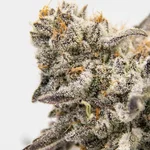Understanding the Legalization of Marijuana
Marijuana, also known as weed or cannabis, has been a highly controversial topic for many years. However, in recent years, there has been a push to legalize marijuana for medicinal and recreational purposes. This has led to a significant shift in attitudes towards marijuana, with more and more countries recognizing its benefits.
What is Marijuana?
Marijuana is a plant that contains chemicals called cannabinoids. These chemicals are responsible for the plant’s psychoactive effects, which can lead to feelings of relaxation, euphoria, and altered perception. Marijuana can be consumed in a variety of forms, including smoking, vaping, edibles, and oils.
The History of Marijuana Legalization
Marijuana has a long and complex history when it comes to legalization. In the United States, marijuana was made illegal at the federal level in 1937. However, in recent years, there has been a push to legalize marijuana on both the state and federal level.>
The Benefits of Legalizing Marijuana
There are several benefits to legalizing marijuana, including increased revenue from taxes, decreased crime rates, and improved public health outcomes. Additionally, legalizing marijuana can provide relief for individuals suffering from chronic pain, anxiety, and other medical conditions.
Understanding the Regulation of Marijuana
While the legalization of marijuana is a step in the right direction, there is still a need for regulation to ensure that the drug is safe and effective. This section will explore the different elements of marijuana regulation.
Quality Control
One of the most important aspects of marijuana regulation is quality control. Marijuana products should be lab tested to ensure that they are free from harmful contaminants, such as pesticides and heavy metals. Additionally, labeling requirements can help consumers make informed decisions about what they are purchasing.
Dosage and Potency
Marijuana regulation should also include guidelines for dosage and potency. This can help prevent accidental overdoses and ensure that users are able to achieve the desired effects from the drug. Regulations can also help prevent the creation of extremely potent strains of marijuana that can be dangerous for users.
Age Limits
Another important aspect of marijuana regulation is age limits. Just like alcohol and tobacco, marijuana use should be restricted to individuals over a certain age, typically 21. This can help prevent underage use and the associated negative health effects.
Conclusion
Marijuana legalization and regulation is a complex issue that requires careful consideration. While there are risks associated with marijuana use, the benefits of legalization and regulation are numerous. By implementing quality control measures, dosage and potency guidelines, and age limits, we can ensure that marijuana is a safe and effective drug for those who choose to use it.












